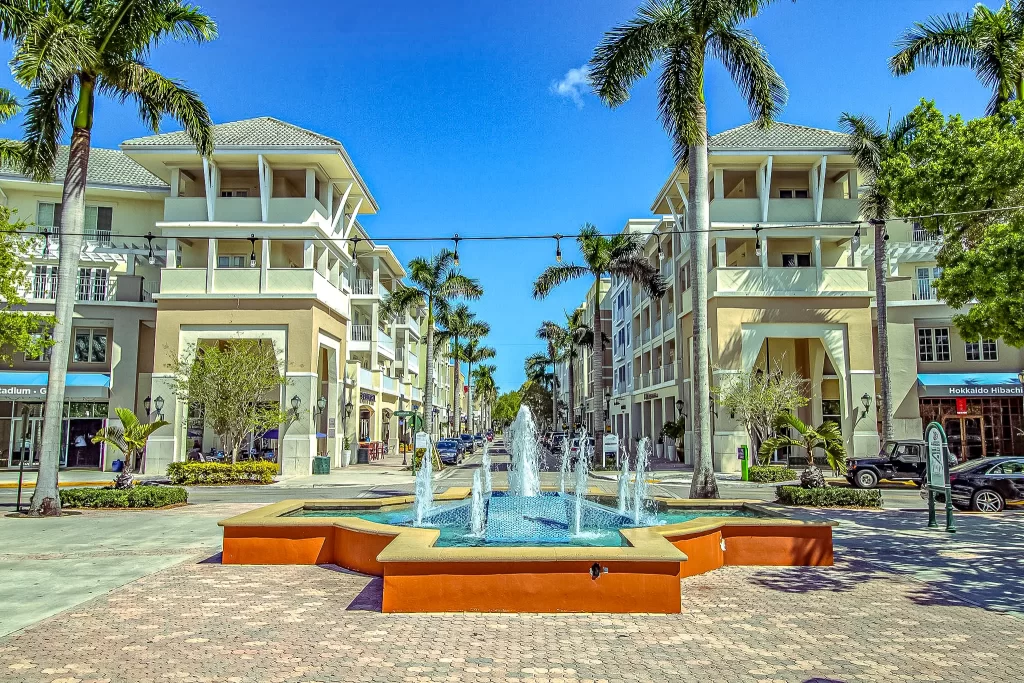The Pros and Cons of Offering Multi-Year Lease Agreements
Understanding Multi-Year Lease Agreements
A multi-year lease agreement is a rental contract between a landlord and a tenant that extends beyond the standard one-year term, often ranging from two to five years or more. These agreements can offer stability for both parties but also come with potential risks. Understanding the advantages and disadvantages of multi-year leases is essential for landlords and property managers to make informed decisions.
The Benefits of Multi-Year Lease Agreements
1. Financial Stability and Predictable Income
One of the most significant advantages of multi-year lease agreements is the financial stability they provide. Landlords benefit from a steady and predictable income stream, reducing the risk of rental vacancies and the uncertainty that comes with frequent tenant turnover.
For example, if a property typically rents for $2,000 per month, a three-year lease guarantees $72,000 in revenue, assuming the tenant remains compliant with the lease terms. This assurance allows landlords to plan for property maintenance, mortgage payments, and other financial obligations more effectively.
2. Lower Turnover Costs
Tenant turnover is one of the biggest expenses landlords face. Costs associated with finding new tenants include marketing, background checks, property repairs, and lost rental income during vacancy periods. By securing tenants for multiple years, landlords minimize these expenses and reduce the frequency of property vacancies.
According to industry research, tenant turnover can cost landlords between $1,000 and $5,000 per unit, depending on the extent of required maintenance and market conditions. A multi-year lease can significantly cut these costs by ensuring tenant retention.
3. Stronger Tenant-Landlord Relationships
Long-term leases foster stronger relationships between landlords and tenants. Tenants who commit to multiple years in a property are more likely to take better care of the unit, as they see it as a longer-term home rather than a temporary residence. A stable tenant-landlord relationship also improves communication and cooperation, making it easier to address maintenance requests and lease compliance issues.
4. Protection Against Market Fluctuations
Real estate markets are cyclical, with rental prices fluctuating due to supply and demand. A multi-year lease can protect landlords from market downturns by securing tenants at a consistent rental rate, ensuring steady income even when market conditions become unfavorable.
For instance, if rental rates in a particular neighborhood drop due to economic downturns or increased rental supply, landlords with multi-year lease agreements are safeguarded from sudden declines in rental revenue.
5. Reduced Administrative Burden
Managing lease renewals and tenant turnovers requires significant time and effort. From processing paperwork to conducting property showings and screening new tenants, the administrative workload can be overwhelming. A multi-year lease streamlines this process, allowing landlords to focus on property maintenance and tenant satisfaction rather than constantly seeking new tenants.
Challenges and Risks of Multi-Year Lease Agreements
1. Limited Flexibility for Rent Increases
One of the primary drawbacks of a multi-year lease agreement is the potential loss of flexibility in adjusting rental rates. If the market experiences rapid appreciation, landlords may find themselves locked into a lease agreement with a below-market rental rate. This can lead to lost revenue over time.
To mitigate this risk, landlords can include rent escalation clauses in the lease agreement. These clauses specify periodic rent increases, typically based on inflation, market conditions, or a predetermined percentage.
2. Tenant Default and Eviction Complexities
While multi-year leases offer stability, they also pose risks if a tenant defaults on rent payments or violates lease terms. Eviction processes can be lengthy and costly, particularly in jurisdictions with strict tenant protection laws.
To minimize this risk, landlords should conduct thorough tenant screenings before signing a multi-year lease. Reviewing credit histories, rental backgrounds, and employment verifications can help ensure that tenants have the financial stability to fulfill their lease obligations.
3. Property Maintenance and Wear and Tear
Long-term tenancies can lead to increased wear and tear on rental properties. Without frequent tenant turnovers, landlords may not have as many opportunities to conduct full property inspections and perform necessary upgrades.
Implementing periodic property inspections and maintenance clauses in the lease agreement can help landlords address this issue. For instance, specifying biannual inspections allows landlords to assess the property’s condition and ensure timely repairs.
4. Market Volatility and Changing Regulations
Real estate laws, tax policies, and rental regulations can change over time, impacting landlords’ ability to manage their properties effectively. A long-term lease agreement may lock landlords into terms that become less favorable due to regulatory changes.
For example, if a local jurisdiction introduces rent control measures that cap increases on existing leases, landlords with multi-year agreements may be unable to adjust rents in response to new expenses.
5. Tenant Dissatisfaction and Early Lease Termination
Circumstances change, and tenants may need to relocate due to job changes, family situations, or financial constraints. If a tenant wants to break a multi-year lease early, it can create complications for landlords.
To address this, landlords can include an early termination clause that outlines specific conditions and penalties for breaking the lease. This clause may require tenants to provide advance notice and pay a specified fee to cover potential financial losses.
Best Practices for Implementing Multi-Year Lease Agreements
To maximize the benefits of multi-year lease agreements while mitigating risks, landlords should follow these best practices:
Include Rent Escalation Clauses – Specify periodic rent increases to account for inflation and market fluctuations.
Screen Tenants Thoroughly – Conduct credit, employment, and rental history checks to ensure financial stability and lease compliance.
Incorporate Maintenance and Inspection Clauses – Require periodic property inspections to monitor wear and tear and address maintenance needs.
Define Early Termination Terms – Establish clear penalties and conditions for breaking the lease early to minimize financial losses.
Stay Informed About Market Trends and Regulations – Regularly review local real estate laws and market conditions to make informed leasing decisions.
By carefully structuring multi-year lease agreements, landlords can achieve financial stability while minimizing risks. Understanding the pros and cons, along with best practices, enables property owners to optimize their leasing strategies for long-term success.

Get a Free Rental Analysis
Want to know how much your home will rent for? We’ll send you a free rental report!
The Challenges and Risks of Multi-Year Lease Agreements
1. Limited Flexibility for Rent Increases
One of the primary drawbacks of a multi-year lease agreement is the potential loss of flexibility in adjusting rental rates. If the market experiences rapid appreciation, landlords may find themselves locked into a lease agreement with a below-market rental rate. This can lead to lost revenue over time, reducing the profitability of the investment.
For example, if rental prices in an area increase by 10% annually due to economic growth and high demand, a landlord with a fixed-rate, five-year lease may miss out on significant income. This can be especially problematic in high-inflation environments where the cost of property maintenance, taxes, and utilities continues to rise.
To mitigate this risk, landlords can include rent escalation clauses in the lease agreement. These clauses specify periodic rent increases, typically based on inflation, market conditions, or a predetermined percentage. Some leases use Consumer Price Index (CPI) adjustments to ensure that rent keeps pace with inflation, while others include fixed annual increases of 3% to 5%.
2. Tenant Default and Eviction Complexities
While multi-year leases offer stability, they also pose risks if a tenant defaults on rent payments or violates lease terms. Eviction processes can be lengthy and costly, particularly in jurisdictions with strict tenant protection laws.
For instance, if a tenant signs a three-year lease but loses their job in the second year and stops paying rent, the landlord may face an extended legal battle to reclaim the property. The eviction process can take months and may require hiring an attorney, filing court documents, and potentially dealing with property damage or unpaid utility bills.
To minimize this risk, landlords should conduct thorough tenant screenings before signing a multi-year lease. Reviewing credit histories, rental backgrounds, and employment verifications can help ensure that tenants have the financial stability to fulfill their lease obligations. Additionally, landlords can require a higher security deposit or include a lease guarantor who will be responsible for rent payments if the tenant defaults.
3. Property Maintenance and Wear and Tear
Long-term tenancies can lead to increased wear and tear on rental properties. Without frequent tenant turnovers, landlords may not have as many opportunities to conduct full property inspections and perform necessary upgrades.
For example, if a tenant lives in a rental unit for five years without major maintenance visits, issues like plumbing leaks, HVAC inefficiencies, or structural damage may go unnoticed until they become costly problems. The accumulation of minor damages over a long period can significantly reduce the property’s value and increase repair expenses at the end of the lease.
Implementing periodic property inspections and maintenance clauses in the lease agreement can help landlords address this issue. For instance, specifying biannual inspections allows landlords to assess the property’s condition and ensure timely repairs. Additionally, landlords can include a requirement for regular professional cleaning or minor maintenance responsibilities that tenants must fulfill.
4. Market Volatility and Changing Regulations
Real estate laws, tax policies, and rental regulations can change over time, impacting landlords’ ability to manage their properties effectively. A long-term lease agreement may lock landlords into terms that become less favorable due to regulatory changes.
For example, if a local jurisdiction introduces rent control measures that cap increases on existing leases, landlords with multi-year agreements may be unable to adjust rents in response to new expenses. Similarly, changes in property tax laws or short-term rental restrictions could affect the overall profitability of a rental property.
To protect themselves, landlords should stay informed about local real estate laws and consider including force majeure clauses that allow for renegotiation or termination under certain legal changes. Another strategy is to offer renewable shorter-term leases (e.g., two-year leases with renewal options) instead of committing to long-term fixed terms.
5. Tenant Dissatisfaction and Early Lease Termination
Circumstances change, and tenants may need to relocate due to job changes, family situations, or financial constraints. If a tenant wants to break a multi-year lease early, it can create complications for landlords.
For instance, a tenant who signs a five-year lease but is transferred to another city for work after two years may request to terminate the agreement. Without clear terms in place, the landlord may struggle to find a replacement tenant quickly, leading to vacancy losses and unexpected turnover costs.
To address this, landlords can include an early termination clause that outlines specific conditions and penalties for breaking the lease. This clause may require tenants to provide 60-90 days’ notice and pay a specified fee (such as two months’ rent) to cover potential financial losses. Additionally, landlords can offer lease assignment options, allowing tenants to find a qualified replacement who will take over the remainder of the lease.
6. Legal and Administrative Burdens
Managing a multi-year lease involves additional legal and administrative complexities. Drafting a well-structured lease agreement, ensuring compliance with local laws, and handling potential disputes require legal expertise and ongoing oversight.
For example, lease agreements must clearly define renewal terms, maintenance responsibilities, and dispute resolution mechanisms to prevent conflicts. If any aspect of the lease is ambiguous, landlords may face legal challenges from tenants who interpret the agreement differently.
To avoid these pitfalls, landlords should work with real estate attorneys to draft legally sound lease agreements that address all contingencies. They should also maintain detailed records of tenant communications, rent payments, and maintenance requests to ensure smooth lease management.
Key Takeaways for Landlords
Include rent escalation clauses to mitigate risks of below-market rates.
Conduct thorough tenant screenings to reduce the likelihood of default.
Schedule regular property inspections to prevent long-term damage.
Stay updated on rental laws to avoid regulatory complications.
Implement clear early termination policies to manage unexpected tenant departures.
Work with legal professionals to draft comprehensive lease agreements.
By acknowledging these risks and implementing strategic lease terms, landlords can balance the benefits and challenges of multi-year lease agreements to optimize their rental property management.

Best Practices for Structuring Multi-Year Lease Agreements
1. Conduct Market Research Before Setting Lease Terms
Before offering a multi-year lease, landlords should conduct a thorough analysis of the local rental market to determine the appropriate lease duration and rental pricing strategy. Reviewing rental trends, vacancy rates, and economic forecasts can help landlords make informed decisions.
For example, in a rapidly growing market, a three-year lease with annual rent increases may be preferable, while in a slower market, a five-year lease with more competitive terms might attract long-term tenants. Landlords should also analyze historical rent growth data and consult real estate professionals to set realistic and sustainable rental rates.
2. Include Rent Adjustment Clauses
To protect against inflation and market fluctuations, landlords should include rent escalation clauses in multi-year leases. These clauses specify how and when rent will increase during the lease term. Common types of rent adjustments include:
Fixed Annual Increases – Rent rises by a predetermined percentage (e.g., 3-5%) each year.
Consumer Price Index (CPI) Adjustments – Rent is adjusted based on the rate of inflation.
Market Review Adjustments – Rent is reevaluated periodically based on comparable market rents.
A well-crafted rent escalation clause ensures that rental income keeps pace with rising expenses such as property taxes, insurance, and maintenance costs.
3. Define Responsibilities for Maintenance and Repairs
Long-term tenants often expect landlords to handle major maintenance issues, but clearly outlining responsibilities in the lease can prevent disputes. The lease should specify:
Landlord responsibilities – Major repairs (roofing, HVAC, plumbing, structural issues)
Tenant responsibilities – Minor maintenance (light bulbs, air filters, minor wear-and-tear repairs)
Required inspections – Scheduled property assessments to address maintenance issues proactively
Additionally, landlords can include a preventive maintenance clause requiring tenants to report issues promptly to prevent further damage. For example, failure to report a leaking pipe could lead to mold damage, increasing repair costs.
4. Offer Incentives for Long-Term Commitments
To attract high-quality tenants to sign multi-year leases, landlords can offer incentives such as:
Reduced security deposits for tenants with strong credit histories
Discounted rent for longer lease terms (e.g., a lower rate for a three-year lease compared to a one-year lease)
Free amenities or upgrades (e.g., free parking, upgraded appliances, or professional cleaning services)
Flexible payment options such as biweekly rent payments to align with tenants’ pay schedules
These incentives make long-term leases more appealing to tenants while ensuring landlords secure reliable rental income for an extended period.
5. Include an Early Termination Clause
Even with a multi-year lease, unforeseen circumstances may lead tenants to request early termination. Instead of dealing with an unexpected vacancy, landlords should include a well-defined early termination clause specifying:
Required notice period (e.g., 60-90 days)
Termination fees (e.g., two months’ rent or the cost of finding a new tenant)
Tenant responsibility for subleasing (if applicable)
This clause ensures that landlords are financially protected while giving tenants a clear exit strategy if they must relocate due to job changes or personal reasons.
6. Screen Tenants Thoroughly
Since multi-year leases require a long-term commitment, landlords should thoroughly vet potential tenants to minimize risks. A comprehensive screening process should include:
Credit history checks – To assess financial responsibility
Employment verification – To confirm stable income sources
Previous rental history – To identify any past evictions or lease violations
References from past landlords – To evaluate tenant reliability
By selecting responsible tenants with a strong financial background, landlords can reduce the risk of default and lease disputes over the lease term.
7. Clarify Subleasing and Lease Transfer Policies
In some cases, tenants may need to relocate before the lease term ends. Allowing subleasing or lease transfers can provide flexibility while ensuring that the rental unit remains occupied.
Landlords should clearly state:
Whether subleasing is permitted
Screening requirements for subtenants
Tenant obligations for securing a replacement tenant
Any additional fees for lease transfers
A structured subleasing policy ensures that new tenants meet the landlord’s standards while maintaining rental income consistency.
8. Stay Compliant with Local Rental Laws
Multi-year leases must comply with local landlord-tenant laws, which may regulate:
Rent control and annual increase limits
Security deposit limits and refund policies
Eviction procedures
Required maintenance obligations
Landlords should consult real estate attorneys or property management professionals to ensure lease agreements adhere to local, state, and federal regulations.
9. Use a Legally Binding and Well-Drafted Lease Agreement
A multi-year lease should be comprehensive and legally sound to prevent future disputes. The lease should cover:
Lease duration and renewal terms
Rent amount and escalation schedule
Maintenance responsibilities
Security deposit terms
Rules regarding pets, smoking, and noise
Consequences of lease violations
Working with a real estate attorney ensures that the lease protects both parties and covers all potential contingencies.
10. Maintain Open Communication with Tenants
Long-term leases require strong landlord-tenant relationships to ensure a positive rental experience. Landlords should prioritize clear communication by:
Responding promptly to maintenance requests
Providing updates on scheduled inspections or repairs
Offering renewal incentives before the lease expires
Addressing tenant concerns in a professional manner
A positive relationship with tenants reduces turnover rates and encourages lease renewals, minimizing vacancies and maximizing rental income.
Final Thoughts
Multi-year lease agreements offer financial stability, lower turnover rates, and cost savings, but they also come with challenges such as limited rent flexibility, tenant default risks, and market uncertainties. By implementing best practices like rent escalation clauses, thorough tenant screening, clear lease terms, and proactive property management, landlords can mitigate risks and maximize the benefits of long-term leases.
When structured correctly, a multi-year lease agreement becomes a powerful tool for landlords seeking consistent rental income and long-term investment growth. By carefully considering the pros and cons, landlords can make informed decisions that align with their property management goals and market conditions.
Suggested Relevant Links:
The Nightmare of Inadequate Lease Agreements in Jupiter, FL
How Market Trends Shape the Perfect Lease Agreement
Comprehensive Guide to Investment Property Tax Deductions: Maximize Your Savings
FAQ: Multi-Year Lease Agreements
1. What is a multi-year lease?
A rental contract lasting two or more years, providing long-term stability for both landlords and tenants.
2. What are the benefits?
- Stable rental income
- Lower vacancy rates
- Reduced administrative work
- Stronger tenant relationships
3. What are the downsides?
- Limited rent flexibility
- Tenant default risks
- Market uncertainty
- Harder to remove problem tenants
4. How can landlords adjust rent over time?
By including rent escalation clauses like fixed annual increases or CPI adjustments.
5. How can landlords screen tenants for long-term leases?
Check credit history, employment, rental history, and references to ensure reliability.
6. Should multi-year leases include an early termination clause?
Yes, with notice requirements, penalties, and subleasing rules to protect landlords.
7. How can landlords attract tenants to long-term leases?
Offer discounted rent, reduced security deposits, or upgraded amenities.
8. How can landlords handle market changes?
Use rent adjustment clauses, tiered leases, or periodic market reviews.
9. Are multi-year leases legally different?
Basic laws apply, but landlords must follow local rent control, security deposit, and eviction regulations.
10. Is a multi-year lease the right choice?
It’s ideal for landlords prioritizing stability and reduced turnover but not for those needing maximum rent flexibility.



